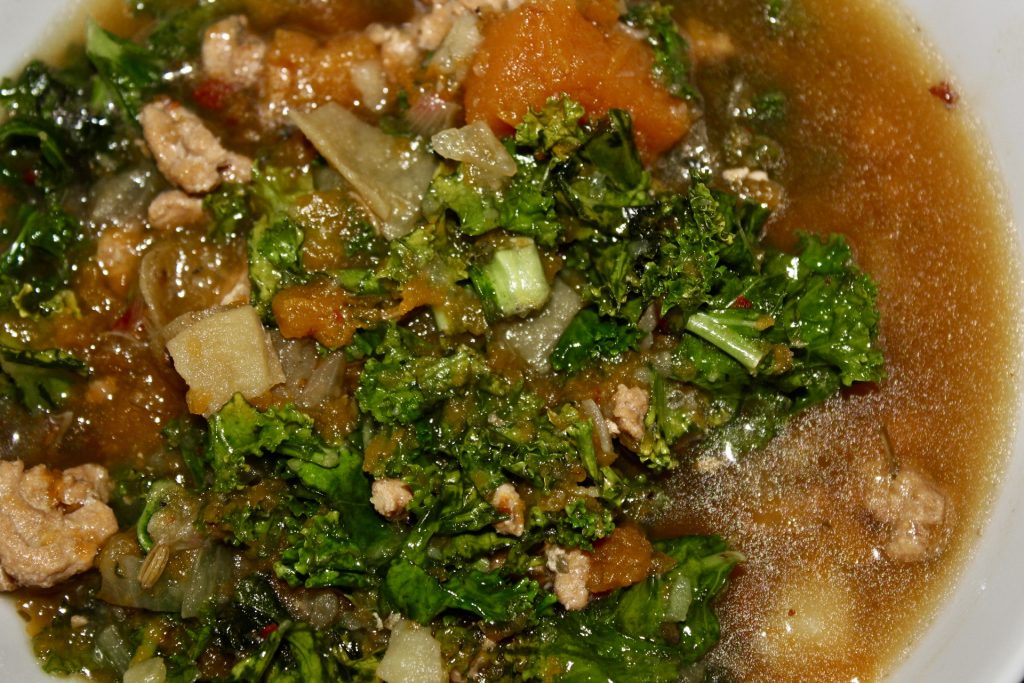I know that time flies when you’re having fun, but have really experienced that over the past few weeks. However, unfortunately for him, while my parents and I executed a nonstop travel and tourism itinerary, Jonathan was left at home – or more accurately, at work. His company has recently changed over their ERP system which in case you’re not familiar with the term, is a very robust software system which controls just about every aspect of the business, from sales to operations to invoicing and accounting (and if you are familiar with ERP systems, please excuse my oversimplified explanation!). Anyway with a transition that impacts so many different parts of the business there are bound to be some bumps in the road along the way. Regrettably it seems for Jonathan that there are more than a few issues which have resulted in an increased workload in a high stress environment. One morning, as my dad and I walked to collect groceries, we talked about this situation and his own long history of working in operations management. We both agreed that in such a position the biggest challenge is making time for the important but non-urgent things since the bulk of one’s time is spent “fighting fires.” At this, my dad expressed his gratitude for the space and time that his current position allows for him to organize and structure his day in a more balanced and strategic manner. He argued that having the time to sit down to assess his calendar and priorities and make a plan which accommodates the essentials and the nice-to-dos as been instrumental as he works to build consistency with some of his personal goals and habits. And he’s right. Although we are probably all somewhat aware of our innate fight-or-flight response, according to leading research on the topics of self-control and willpower, we also are equipped with an instinctual pause-and-plan response.
The fight-or-flight response has the ability to protect and save us in case of emergency; it’s an automatic physiological state which allows our bodies and brains to dedicate all their energy to surviving an imminent crisis. Instinctually all of our limited physical and mental energy is directed to ensure self-preservation which is of course critical in the right context. However, it can also annoyingly become activated in some more innocuous situations when we encounter a tempting opportunity which violates our long term goals. And although it’s safe to say that the physiological response that we feel is probably not quite as strong as in a life or death scenario, we do often feel very real physical and emotional reactions when we face an internal willpower conflict. If we rely on our fast fight-or-fight instincts when facing an internal struggle to not eat the dessert or buy the new leggings (not that the latter would ever happen to anyone I know….) or to do something which we know we should, like go to barre or finish a project, etc. we are likely to be pushed in a direction which is more satisfying in terms of instant gratification than longer term success in order to get our body back to a more normal state. In such a case, we do better when we are able to slow down and allow our brain’s prefrontal cortex to assess the situation and exercise some self-control. This is what is referred to as the pause-and-plan response, which Dr. Kelly McGonigal of Stanford University calls the willpower instinct. She says “the pause-and-plan response drives you in the opposite direction of the fight-or-flight response. Instead of speeding up, your heart slows down, and your blood pressure stays normal [and] your body relaxes a little. The pause-and-plan response puts your body in a calmer state… not [to] paralyze you in the face of internal conflict, but to give you freedom. By keeping you from immediately following your impulses, the pause-and-plan response gives you the time for more flexible, thoughtful action.”
While switching careers to a less stressful position might help afford you the time to move from the front lines of the fire brigade to a more calm, pause-and-plan friendly environment, it’s probably not very practical advice. According to McGonigal, “the single best physiological measurement of the pause-and-plan response is something called heart rate variability [which] provides an amazing window into the body’s state of stress or calm…. When people are under stress, the sympathetic nervous system takes over, which is part of the basic biology that helps you fight or flee. Heart rate goes up, and variability goes down. The heart gets ‘stuck’ at a higher rate – contributing to the physical feelings of anxiety or anger that accompany the fight-or-flight response… However, studies show that people with higher heart rate variability are better at ignoring distractions, delaying gratification and dealing with stressful situations. They are also less likely to give up on difficult tasks, even when they initially fail or receive critical feedback. These findings have led psychologists to call heart rate variability the body’s ‘reserve’ of willpower – a physiological measure of your capacity for self-control. If you have high heart rate variability, you have more willpower available for whenever temptation strikes.” And thankfully, regardless of what your job or life entails, there are a few concrete and accessible methods of increasing heart rate variability. Research shows in fact, that the most effective means of doing so are to slow your breathing to 4-6 breaths per minute, to participate in physical exercise (it need not be elaborate, rigorous, or long in terms of duration), and to decrease sleep deprivation.
This past month has ben probably the biggest departure from my normal routine in years and although it was at least fun focused rather than stressful, I did still appreciate a quiet weekend to catch up on things so I could pause-and-plan. I got to the barre for my physical exercise and made sure to allow my body to get as much rest and sleep as it wanted. And of course I used the downtime to step back and consider what I need to do before we fly away again next week to Denver. By taking the time to pause-and-plan, I mapped out specific goals for each day of the next week which will ensure that as much gets done as possible without becoming stressful or overwhelming. It felt good heading into the week with a clear plan of action, my to do list made, classes planned, and meal prep done. As it would seem by the weather outside, we are moving into fall now and so I’m now working on all kinds of new cozy casserole and soup options along with one of my all time favorites – my spin on an old Olive Garden classic all cleaned up. A Whole30 Zuppe Toscana which is packed with flavor and perfect as you pause-and-plan to crush your September resolutions.



Serves: 4

- Ground/Minced Turkey 1 lb. (400 g)
- Fennel Seeds 1 TBSP
- Red Pepper Flakes 1 TSP
- Dried Sage 1 TSP
- Black Pepper 1 TSP
- Sea Salt 1 TSP
- Medium Yellow Onion 1 each
- Chicken Bone Broth 6 cups (1400 ml)
- Medium White Potatoes 3 each
- Butternut Squash 1 each
- Chopped Kale 1.5 cup (100 g)
- Coconut Oil, Ghee or Clarified Butter 1 TBSP
- Start by browning the ground/minced turkey in a skillet over medium high heat with half the coconut oil (or other cooking fat), adding the fennel seeds, red pepper flakes, sea salt, black pepper, and sage. Stir to combine well.
- While the meat is cooking, chop the yellow onion and kale and then cube the potato and butternut squash (no need to peel the potatoes, unless you prefer).
- Once the turkey has been browned, set aside and in a large stockpot, heat the remaining coconut oil/cooking fat over medium high heat and sauté the onions.
- Add the chicken broth, potato, and butternut squash to t3he pot with the onions and cook until the potatoes are tender.
- Add the sausage and chopped kale and cook for another 2-3 minutes. Enjoy!





